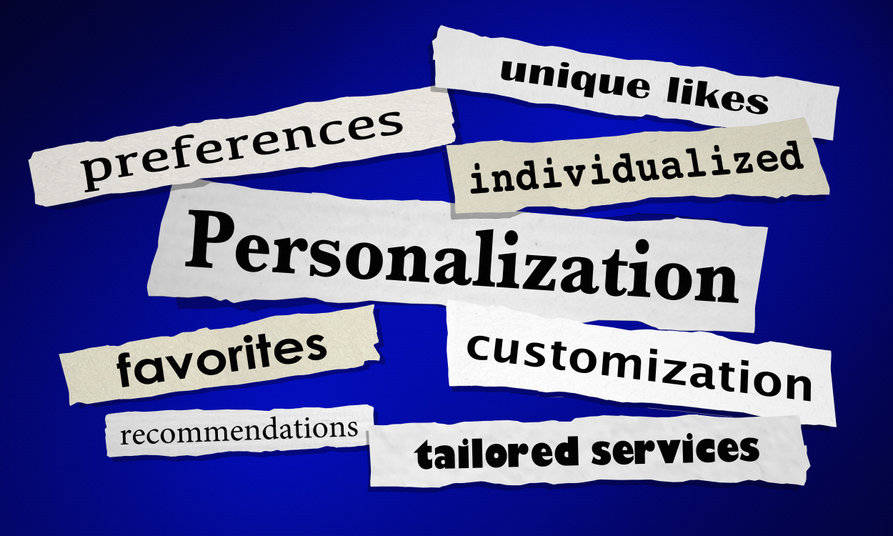
Personalization is becoming a strategic marketing imperative. Marketing personalization uses data to deliver customized brand messages to individual prospects and customers. Unlike traditional marketing, which casts a wide net, personalized marketing delivers the most relevant message at the ideal time through the right channel. It encompasses everything from email segmentation, pre-defined buyer personas, targeted landing pages, digital advertising, recommended content or even providing customers with a dedicated, account-based representative. In one survey, 77 percent of B2B sales and marketing professionals said they believe personalization builds better customer relationships. Additionally, 55 percent of the professionals recognized that personalization results in higher conversion rates, leading to more opportunities for business growth. To take advantage of the personalization trend, consider these three essential pillars to lay the groundwork for your strategy.
Three Keys to Make Personalization Count

- Make the audience feel seen. Whether using the email recipient’s name, addressing a key challenge of their industry or directly referencing a prospect’s website or previous interactions, personalization makes the recipient feel seen and understood. Often, that begins with research. According to Laura Patterson of VisionEdge Marketing, “Traditional research is ideal when you have customer-related questions to answer: why a customer buys, how they buy, what they need to make a purchase decision, why they stay, why they leave, what they might need in the future.” Seek to uncover, understand and leverage the answers to questions to customize your messaging and content.
- Be relevant and deliver value. Relevancy is all about saying the right thing at the right time. There is no one-size-fits-all answer to being relevant to your audience. Maintain a pulse on the market, identify viable opportunities and approach your prospects and audiences with understanding. Most importantly, know why you are reaching out. In other words, what is the purpose of your content? Why should your audience take the time to read or listen? Why now? What problem are you there to solve? Why you? Why them? Answering “why” is essential to personalizing outreach that matters to your audiences.
- Humanize interactions. Personalization is a chance to direct your messaging toward specific prospects, making them feel treated like a person, rather than a number or an email address. This benefit goes both ways: when you make the effort to personalize outreach, prospects sense there is a person behind the message, and that person is paying attention. Whichever channel you’re using, from email to social media to digital or print advertising, ensure your messaging balances personalization with transparency. From there, you can create a meaningful connection that facilitates trust and humanizes your brand.
How to Get Started
Clearly, it isn’t possible to manually create an email, ad or landing page for every prospect or customer. But with the right tools in place, marketers can achieve the same effect. To be successful, personalization marketing requires technology that supports data collection, segmentation, analytics and automation. In addition to technology, companies need access to martech experts with advanced skill sets and new ways of thinking. Here are the basic requirements for taking the leap into marketing personalization:
- Analytics platform: Analytics platforms collect the data marketers rely on to create personalized messages. This data goes far beyond names and email addresses, providing insights into the behaviors of prospects and customers. Examples include Google Analytics, Heap Analytics and Crazy Egg.
- Data management platform (DMP): Data management platforms help marketers collect, store and manage user data to create targeted segments for digital advertising, personalization and content customization. They collect information from a variety of sources including web browsers, mobile apps, social media, online and offline videos and even television. Data management platform providers include Salesforce DMP, Nielsen, Neustar and Oracle.
- Customer relationship management (CRM) software: Your CRM is the hub of customer information. Anything you learn about a prospect or customer—from sales calls, lead capture forms or third-party data providers—should be entered in your CRM database. When connected with other marketing technologies, a CRM provides valuable information essential to personalizing marketing efforts.
- Post-click landing pages: A post-click landing page is a standalone page, separate from your website navigation, which encourages visitors to perform a specific action. This can include downloading an ebook, subscribing to a newsletter or signing up for a free trial. If executed well, post-click landing pages are one of the most effective ways to collect information and generate leads.
- Email marketing platform: Email marketing platforms are a staple of every marketing technology stack. That’s not surprising, considering the email address is a piece of information easily offered up by prospects. Email marketing is one of the most cost-effective ways to personalize outreach and build engagement with prospects and customers.
While these are the basic requirements for marketing personalization, companies can opt for more robust technology as their needs and capabilities grow. More advanced options include tag management platforms, demand side platforms, identity resolution platforms, artificial intelligence and machine learning.
Empathy at the Center

At its core, marketing personalization involves interacting with your target audiences in a way that feels personal, human and natural. To be effective, content creators, marketers and salespeople need to step into the buyer’s shoes and practice empathy. Understand what makes your target market tick, what their challenges are and how they hope to achieve their goals. Use personalization tactics, based on these customer-centric foundations, to show that you care about your audience. Personalized content and messaging, when guided by relevance, value and empathy, connect you with your target markets through authentic human experiences that build meaningful relationships that grow your business.
